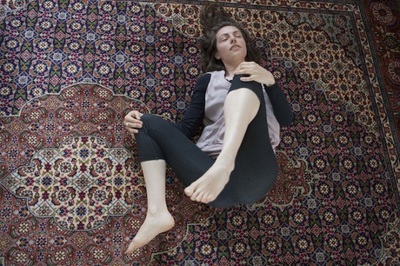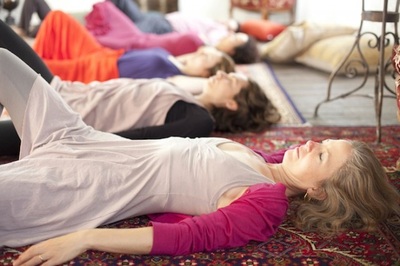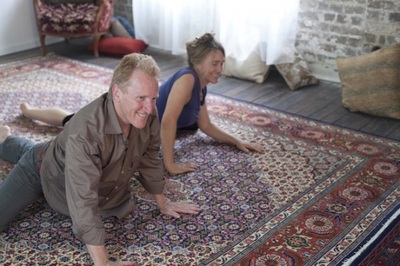About the feldenkrais Method
About the Feldenkrais Method
By Aislinn Andrews
What is Feldenkrais?
Pronounced ‘feld-en-krise’, it’s essentially a series of movement exercises. But don’t expect big movements. Think small. That’s because by doing less, you achieve more. Exercises are done slowly, easily and with minimum effort. We’ll help you correct old habits with new, more efficient actions. So you’ll be able to move more freely, long after the class is over.
How is it taught?
The Feldenkrais method is practised in two ways, Awareness Through Movement (ATM) and Functional Integration (FI). ATM is taught in a class situation where the teacher verbally guides students through mild exercises. FI is practised one-on-one with the practitioner’s hands gently moving the client.
What are the benefits?
It improves your posture (particularly if you stare at a computer screen all day), releases tension, eases pain, increases flexibility, helps with balance and by teaching you to move ‘without effort’ it can give you more energy in your day-to-day life.
Who is it suitable for?
People of all ages and levels of fitness. Whether you are a stressed office worker, recovering from an accident, have a sports injury, suffer a medical condition or simply desire more flexibility, then Feldenkrais is for you. If you already do yoga or pilates, it will complement this perfectly. Dancers, musicians, athletes or actors can also gain from it.
Who can it help?
If you suffer from arthritis, asthma, back pain, balance problems, breathing difficulties, cerebral palsy, chronic pain, fibromyalgia, hip or shoulder problems, learning difficulties, neck and head pain, RSI, Parkinson’s, scoliosis, stiffness, stroke, whiplash or injuries then you can benefit from Feldenkrais.
Origins of Feldenkrais
By Aislinn Andrews
What is Feldenkrais?
Pronounced ‘feld-en-krise’, it’s essentially a series of movement exercises. But don’t expect big movements. Think small. That’s because by doing less, you achieve more. Exercises are done slowly, easily and with minimum effort. We’ll help you correct old habits with new, more efficient actions. So you’ll be able to move more freely, long after the class is over.
How is it taught?
The Feldenkrais method is practised in two ways, Awareness Through Movement (ATM) and Functional Integration (FI). ATM is taught in a class situation where the teacher verbally guides students through mild exercises. FI is practised one-on-one with the practitioner’s hands gently moving the client.
What are the benefits?
It improves your posture (particularly if you stare at a computer screen all day), releases tension, eases pain, increases flexibility, helps with balance and by teaching you to move ‘without effort’ it can give you more energy in your day-to-day life.
Who is it suitable for?
People of all ages and levels of fitness. Whether you are a stressed office worker, recovering from an accident, have a sports injury, suffer a medical condition or simply desire more flexibility, then Feldenkrais is for you. If you already do yoga or pilates, it will complement this perfectly. Dancers, musicians, athletes or actors can also gain from it.
Who can it help?
If you suffer from arthritis, asthma, back pain, balance problems, breathing difficulties, cerebral palsy, chronic pain, fibromyalgia, hip or shoulder problems, learning difficulties, neck and head pain, RSI, Parkinson’s, scoliosis, stiffness, stroke, whiplash or injuries then you can benefit from Feldenkrais.
Origins of Feldenkrais

Dr Moshe Feldenkrais (1904-1984) was a physicist and engineer. However it was a crippling knee injury, combined with an interest in martial arts that inspired him to devise the Feldenkrais method. After teaching himself to walk normally again, he started helping others. He worked with sufferers of cerebral palsy, chronic pain, stroke, leading musicians, actors and premier athletes right up until his death. His students all over the world continue to practise and teach his work to this day.






